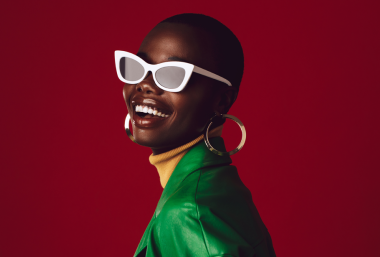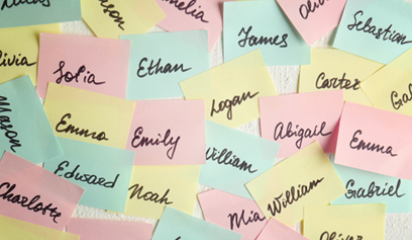In 2023, the global fashion industry was valued at approximately US$1.7 trillion. In fashion, as with any other industry, intellectual property (IP) plays a pivotal role in the growth and value of a business.
The fashion industry is driven by trends. Those trends often refer to decades past or the cultural zeitgeist. As such, it is an industry where creatives are doing the same or similar things. Consequently, IP protection can be extremely valuable, and infringement costly. Protecting the IP in collections and brands while they are new gives an advantage, provided there is something capable of protection.
As Fashion Week 2024 continues apace in New York, we look at where the IP lies in fashion.
Trade marks
Trade marks are probably the most obvious type of IP right in fashion. Trade mark protection ranges from obvious to non-obvious signs that identify brands and fashion houses.
Imagine you have come up with a fashion brand. The name of your brand, or any logo associated with your brand could be a trade mark. Some examples include:
Boss ®, Karen Walker ®, Ralph Lauren’s polo rider, and the LV Damier print.
Perhaps your collection has a signature element that runs through the collection. This could also be a trade mark. Examples of this include,
- the red sole on Louboutin shoes (colour);
- the saddle bag shape of the Saddle bag by Christian Dior (shape); or
- the placement of the letter "T" on Tom Ford glasses (position).
So now you have your trade mark, what do you need to consider?
Consideration – non-use of trade marks
The short but often repetitive nature of fashion trend cycles means that holders need to make sure they are using the trade marks they have registered or run the risk of losing them. Trade mark protection hinges on use of a trade mark in association with the goods or services that it is registered for. If a registered trade mark is left unused for periods of time (the length of time varies with each jurisdiction), the registration becomes vulnerable to being removed from the register due to lack of use.
Consideration – Registered vs Unregistered trade mark rights
You can decide whether to register your trade mark or keep using it unregistered.
Unregistered trade marks are marks that have not been registered with the intellectual property office but have been in the market and built up a reputation. That market presence and reputation makes the mark capable of identifying the brand to consumers. The greater the reputation, the stronger the rights. These can be identified by the ™ symbol.
Registered trade marks are trade marks that have been registered with the intellectual property office. These can be identified by either searching the trade mark register or by the ® symbol. The benefit of registering a trade mark is that it affords you as the owner the exclusive right to use that mark in connection with the goods it is registered for. So, once you have registered your trade mark(s) for your fashion brand, only you have the right to use that trade mark (in the country of registration) in connection with the clothes, shoes, accessories that you registered the trade mark for.
In Europe, Maison Margiela (MM) sought to register a sequence of numbers (0-23) as a trade mark. The brand sought to rely on evidence of its use of the number sequence as an unregistered trade mark in the market to support registration of the mark. While MM’s application was ultimately unsuccessful on other grounds, this "usage" argument can be a helpful tool for acquiring registration.
The owner of the trade mark rights can prevent other people using the trade mark or something confusingly similar in connection with the same or similar goods (or services) that it is registered for. If someone else is using your trade mark for the same or similar goods or services, it is comparatively easier to enforce registered trade mark rights than unregistered trade mark rights. Registered trade marks are also easier to leverage commercially than their unregistered counterparts.
Registered designs
Another tool for IP protection in fashion is design registration. Registered design protection is underutilised in New Zealand despite the fact designs are typically approved much faster than other forms of registerable IP.
Design protection is based on "eye appeal", which refers to features that may influence choice or selection by the potential customer. Imagine you have come up with a unique print for your fashion collection. That print could be capable of being a registered design. Other examples include features like hat shapes and the cuts of precious stones.
Design protection however does not extend to features or elements that are dictated solely by function. Modern day fashion typically involves design features that go beyond function and would fall within the definition of design.
Consideration: how long has the feature been out on the market?
A potential roadblock to a design achieving registration is the concept of originality.
In order for a design to be registered in New Zealand, the design must be new and original. In addition, a design needs to differ from an existing design in details or features that are not variants commonly used in the trade. It is not, however, necessary for all features of a design to be 'new' for the whole design to be considered new. This standard is much easier to satisfy in New Zealand compared to Australia where the requirement is that products should be new and distinctive.
In New Zealand, design applications should be filed before the design is published. If, for example, an image of a shirt from your collection with your unique print is shared on social media, you may not be able to obtain design registration for that print. In that instance, applying for a trade mark registration may be a more appropriate avenue for protection. However, some jurisdictions have grace periods that allow you to obtain design protection even after the design feature has been published.
Imagine you have registered your print as a design. Then you see another designer using a print that you think is similar. Before you take action against them for infringing your registered design, you have to consider if the new design is substantially similar in appearance to your registered design. There are various ways to assess this, which include:
- a side-by-side step to see if the new design is obviously similar to the original;
- an imperfect recollection test which supports the fact that items are not always sold side-by-side; and
- an actual usage test that looks to whether the designs look similar when they are used for their intended purposes.
Copyright
Copyright is a right that protects originality in different types of works; the most relevant for fashion being "artistic works". Examples of artistic works include graphic works, sculptures and models. Graphic works includes paintings, drawings, diagrams, maps, charts or plans.[1]
In creating your collection, you may have created works that copyright can exist in. For example, any dress samples or patterns could be fashion works in which copyright can subsist. Another example is a hand-knitted woollen sweater which may be considered as a work of artistic craftsmanship.
Unlike the other rights, copyright is not a registrable right in New Zealand. The standard for originality is lower for copyright protection compared to designs. As such, originality is also an important consideration in copyright. In fashion, originality will largely lie in the arrangement of features by fashion designer which individually may not be original.
Consideration: originality of the works
Fashion is derivative and referential in its nature. It is fine for your collection to be inspired by other works. However, you need to take care not to start with existing designs and then apply alterations to that starting point as that may run the risk of infringement.
Myth busting – you’re fine if you only copy up to 5% of the work. That is not true; it is about the quality of the copied work and not just the quantity.
Our team are experts in fashion as well as IP. If you need help in making sure your collections are on point in both the intellectual property and fashion worlds, reach out to one of our specialists.
[1] Copyright Act 1994 – s2


























